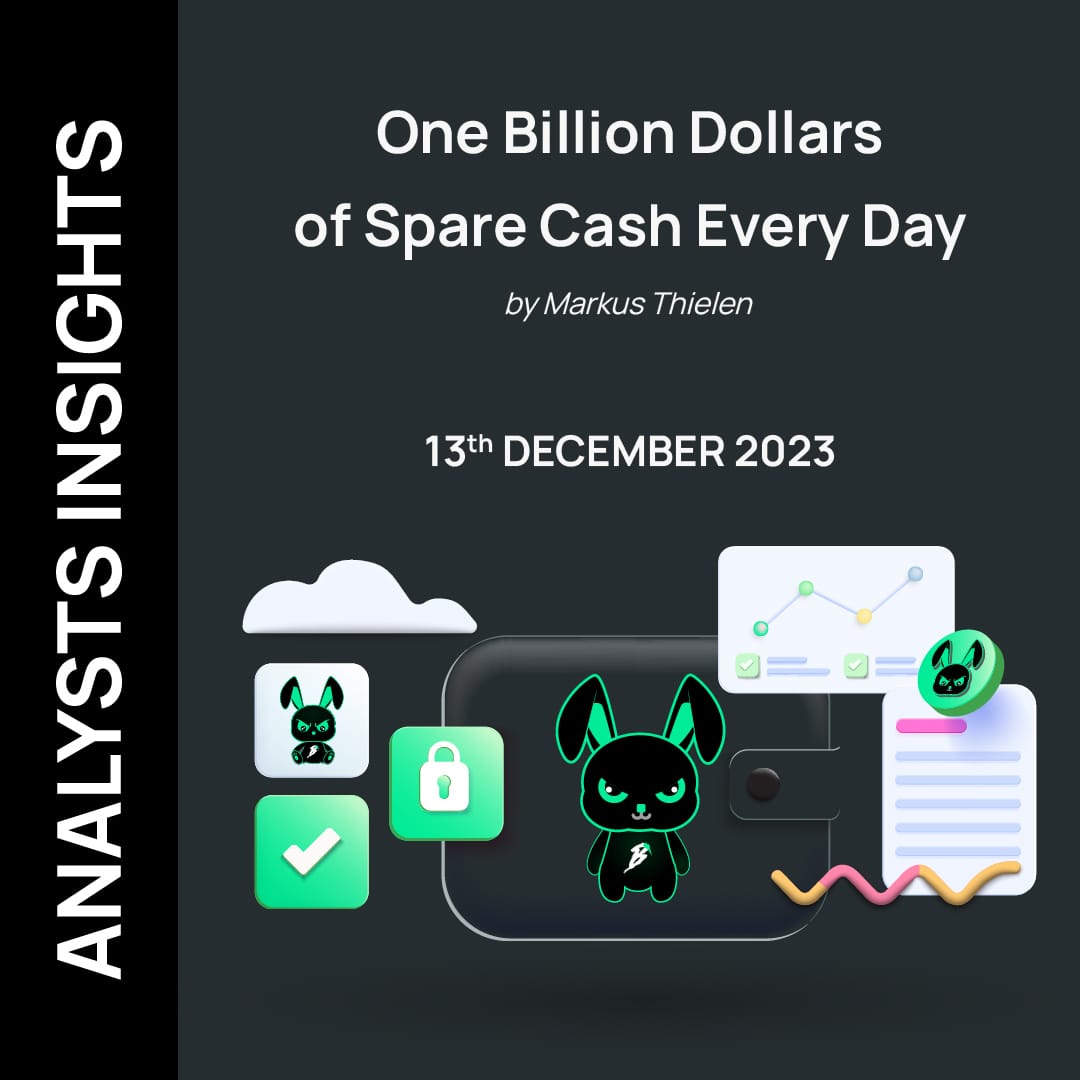Analysts' Insights

One Billion Dollars of Spare Cash Every Day
- by Markus Thielen
There are many different ways to be successful with cryptocurrencies. One way is to correctly anticipate the macroeconomic situation and position ahead of significant changes. Despite the argument that blockchain is a technology, cryptocurrencies undoubtedly drive the occasional speculative mania.
Bitcoin prices peaked in November 2021 when the US Federal Reserve signaled they would eventually restrict their excessive stimulus in response to the COVID crisis. Prices bottomed when the expectations increased that the Fed would eventually finish its hiking cycle.
Due to lockdowns and supply chain restrictions, investors were told that there would be ‘permanently high inflation’ and that ‘inflation would be sticky’ – meaning that inflation would remain in the 4-5% range. Some even argued that financial markets were due to 1970s-style inflation when inflation increased materially.
This was not Matrix on Target’s base case scenario – quite the contrary. We expect inflation to continue to fall over the next two years and likely settle back to around 2%. Last night, we received the last CPI release for this year, and at 3.1%, we expect to see continuous readings of sub-3% next year.
We have been arguing for rate cuts for several months, and the Fed has been on hold since July 2023. The setup is similar to January 2019, when the Fed hiked consecutively in 2018 only to pause then for seven months. During the ‘pause,’ Bitcoin rallied nearly +300%.
With inflation running at 3.1% and US interest rates (Fed Funds) rate at 5.25%, there is inconsistency within the Fed’s monetary policy. But our argument here is not that this inconsistency hurts the economy as it would restrict capital expenditure and eventually suffocate the economy, causing a recession.
We argue that the longer the Fed keeps monetary policy ‘tight,’ the more savers are being paid, which eventually will find its way into risk assets. The economy has shifted from asset-heavy (real estate, industrial buildings, etc.) to an asset-light economy (remote work, business is done through Zoom and other tech apps, etc.).
In addition, the most important sector within the (US) economy is technology, with a 28% market share of the US stock market. As a group, those companies have nearly zero debt and, like many investors, are loaded up on cash they don’t need.
For example, Apple sits on $167 billion in cash and short-term investments (which could be treasury bills), Alphabet has another $150 billion in cash, and Microsoft sits on $121 billion. Overall, the top 13 SP500 companies have $1 trillion in cash, and the critical points are 1) those companies do not need the cash as they continue to generate enough free cash flow and 2) they still earn 5.25% on this cash – thanks to unnecessary high Fed interest rates. This is $52.5 billion of ‘free money’ for those companies - per year.
Considering that the assets in US money market funds have doubled since COVID from $3 trillion to $6.1 trillion, there is another $320bn in interest rate payments per year. This is $370bn annually in interest rate payments – or $1 billion daily. Money that can easily find its way into risk assets (stocks and crypto) and the principal (the $6.1 billion in money market funds) could also be used to increase asset prices.
Most of this interest rate expense is carried by the US government as they pay the rate on the debt as the largest borrower. While they dig a deeper hole, the private sector appears to win and can drive higher asset prices with $1 billion of spare cash every day.
Written by Markus Thielen, Head of Research & Strategy at Matrixport. Author of Crypto Titans.
Join now for more insights around crypto!

Industry views and information shared do not represent Matrixport's position and do not constitute any investment advice.

